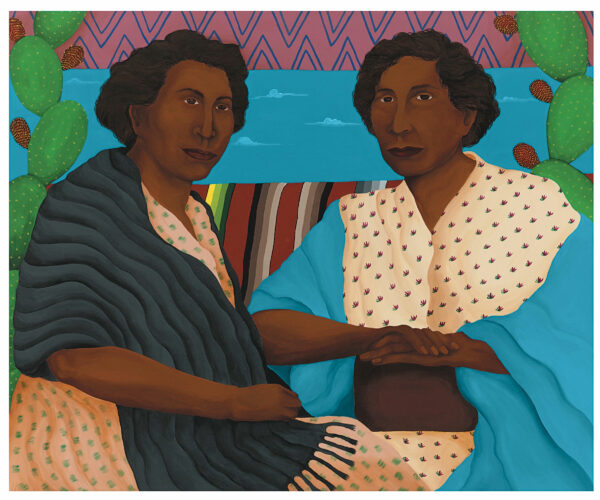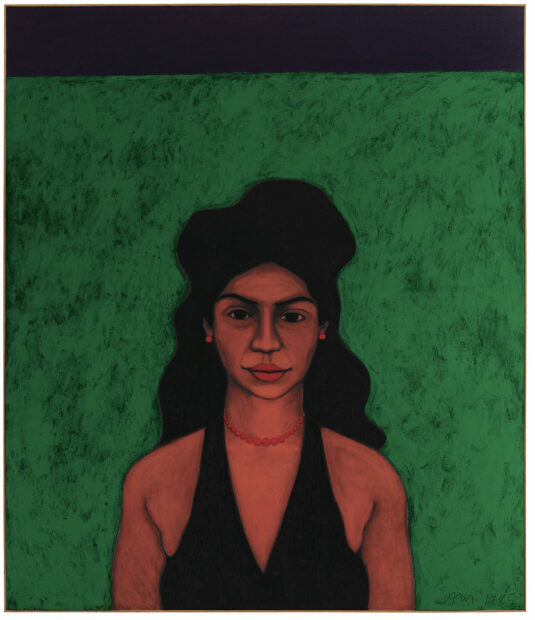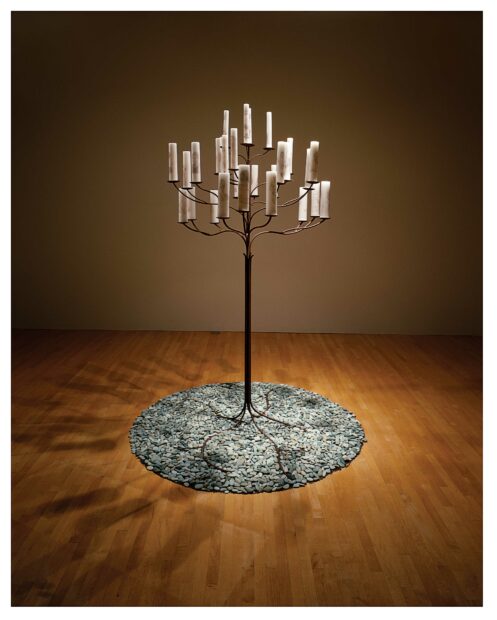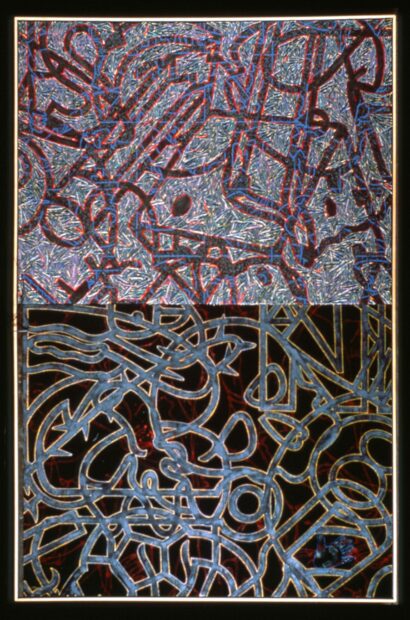Joe Diaz is a private art collector who has acquired a number of significant Latino/Chicano artworks since he began his collection over 30 years ago. Diaz distinctively acts as a conscientious gatherer and keeper. One could even call him a guardian. Comprehensive in both its span of artists and in the evolution of individual artists, Diaz’s collection serves as record of, and evidence for, the continuing struggle of representation of Latino artists, artworks, and culture within the narratives of art history.
I had the unique opportunity to speak with Diaz about his collection, his responsibility as a private collector, and about specific works in the show Refined Reflections into the Formidable: Contemporary Latino Art from the Zoe Diaz Collection, on view at The University of Texas at San Antonio (UTSA). I also had the pleasure of meeting Zoe Diaz, the namesake of the collection and Diaz’s 16-year-old daughter.
Ashley Allen (AA): Will you describe the beginning of your involvement in the arts and tell me what prompted your desire to start collecting?
Joe Diaz (JD): I’ve always been around art and have loved it ever since I was in junior high. I had some really good art teachers and they taught me everything. I could draw and paint okay, but I knew that wasn’t going to be my career. I have been collecting since the mid to late 80s. Of course I didn’t know how to collect back then. I thought that you could just walk into the gallery, say “I want it,” and then you could take it right off the wall. Back then I really wanted to concentrate on Mexican American art. I was just seeing art around the clock. I would go to contemporary art museums, like the Museum of Fine Arts, Houston and all of the galleries. I’d go see Betty Moody at Moody Gallery, and Bill Graham at the Graham Gallery, and all of the other gallery owners in Houston, and I would sit there and just salivate.
AA: Besides protecting a number of historically significant Latino artworks that are in your collection, would you say that you are committed to sharing these works with the public and with future generations?
JD: Absolutely. Because, you know, this is a funny thing. One thing I saw today on an active Facebook group was a picture that came across my feed and really stirred me. It said “MTV and Sony are sponsoring a reality-based art competition show. There’s not one Latino judge or artist in the show.” Wow. But that’s what we put up with all the time. The deal is that this is our culture. This is Mexican American culture. And a lot of work didn’t make it in the 60s and 70s. It was damaged. So I see myself as the keeper of the collection and I don’t resell anything. And there are other collectors around the United States that are doing the same thing. My daughter, Zoe, is 16 and she has learned the importance of the collection and understands the responsibility she has if she chooses to carry it on and keep it growing after I’m gone.
AA: How do you go about buying art for your collection?
JD: I buy directly from artists and I buy from galleries. I look around a lot and travel a lot, but I want to have an idea of what I’m going to buy. I don’t need quantity anymore. I want to make sure that the things I’m collecting are of the best quality. I think that just walking around this show [at UTSA] you can see that. The works included in this show comprise maybe 10% of my collection. I’ve held a show at The Art Museum of South Texas in Corpus Christi and I filled up the whole space. That wasn’t even half of what I had. But, I don’t know how many pieces I have, and I don’t care because it’s not about how many I have.
I tend to collect a lot different from everyone else. A lot of collectors are buying like one, two, or three pieces. And you can kind of tell from this show that I don’t collect just one piece from any given artist. A lot of this work was made just to make a statement. It’s a testament to the artist’ lives. It’s about their histories. And that’s what we’re looking at with this collection. I’m just very fortunate that I’ve had a good life and that I was able to buy these works. A lot of people who view these works have never seen anything like it before. That’s why it’s so important.
AA: Did/do you personally know all of the artists whose work is in your collection?
JD: I knew or know almost every one of the artists in my collection; there’s only a handful that I didn’t know. I didn’t know Roger Brown from Chicago — I have one of his paintings. Of course, I also didn’t know Rufino Tamayo. And I have some Mexican prints from the 40s and 50s. But other than that, I really have known everyone extremely well, and I write to them and talk to them and keep in touch with them all pretty regularly.
AA: Collecting Latino art and fostering Latino artists is clearly very important to you.
JD: My collection is about diversity. I mean, there’s no way that you can pigeonhole it or put it in a box, and that’s what I want to show. Because a lot of people or a lot of shows that have been in Texas or around the United States have tended to be inexpensive prints that have just been hung up, and I’m trying to show the major works by these artists. So that’s a big, big difference.
I’m glad that I’m doing what I’m doing now and that I’m able to buy this work and see it and show it and everything else like that. And I loan out works in my collection. But I started to realize that I was always getting asked in September, so I kind of cut that out. Why drag it out for one National Hispanic Heritage Month show and then forget about it for the other 11 months of the year?
Artists featured in the show include Connie Arismendi, José Luis Rivera Barrera, Enrique Chagoya, Adriana Corral, Ana Laura De La Garza, Alejandro Diaz, Gaspar Enriquez, Jenelle Esparza, Ana Fernandez, John Hernandez, Benito Huerta, Luis Jimenez, César Martínez, Esteban Ramón Pérez, Gloria Osuna Perez, Alfred Quiroz, Chuck Ramirez, Al Rendon, Alex Rubio, John Valadez, Vincent Valdez, Kathy Vargas, and Joanne Armijo Zamaron.
Refined Reflections into the Formidable: Contemporary Latino Art from the Zoe Diaz Collection was curated by Dr. Scott A. Sherer, and is on-view at UTSA in the Russell Hill Rogers Galleries through March 11.







